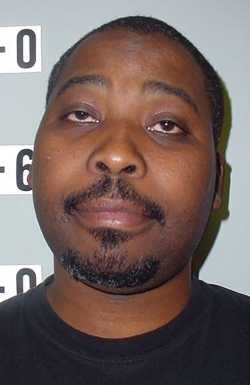As in Iraq where it became the most effective weapon of insurgents, the IED, or improvised explosive device, has raised the casualty count significantly for U.S. forces in Afghanistan the past two years.
A surge in ground forces and a change of strategy, to have more U.S. troops dismount from vehicles more to mix with the Afghan populace, has produced a more target-rich environment for homemade bombs.
In 2008, IEDs killed 68 American service members in Afghanistan. The number rose to 168 in 2009 and to 268 last year, according to the Defense Manpower Data Center.
The number of IED wounded nearly tripled to 3371 in Afghanistan last year, up from 1211 in 2009 and 270 in 2008.
The Joint IED Defeat Organization (JIEDDO), with its $2.8 billion annual budget, is responsible for countering the IED threat.
Mitchell Howell, deputy director of JIEDDO for rapid acquisition and technology, said in a phone interview that the organization has made steady progress against IEDs even though no “silver bullet solution” has been found.
He said the enemy adjusts tactics and techniques swiftly in response to whatever fresh countermeasures the U.S. military adopts.
“Those guys don’t have a long, drawn out materiel acquisition system,” Howell said.
When coalition forces devise a solution to one IED technology, “within weeks if not days, or sometimes hours, the bad guys change the manner in which they deploy” IEDs. “They are always watching what we do, and they change a bit more frequently than what our traditional acquisition system is designed to accommodate.”
Nevertheless, Howell said, JIEDDO’s combination of operations – training the force, uncovering and attacking IED networks, and developing tactics and technologies to defeat devices – has saved lives and steadily is making deployment of IEDs a riskier business for enemies.
“You can judge that by the methods insurgents tend to shift to,” Howell said. “We are seeing a shift back towards suicide-borne IED folks because we have limited their ability to explode IEDs on the roads in some of the villages.”
Suicide attacks are targeted thus more effective, Howell said. “But we are working very hard to be able to discern the personnel and vehicle borne IEDs at a distance, well before they get into critical areas.”
In an agrarian economy like Afghanistan, fertilizer and other bomb-making chemicals are plentiful.
Because almost every IED uses electrical blasting caps to detonate, one “silver bullet solution” would be the ability to “predetonate everything,” Howell said. But most IEDs are buried, making predetonation difficult.
“If you’re going to predetonate a buried item, you need to create enough of a residual charge between the two lead wires to cause that device to explode. To do that through a medium other than air is very difficult,” Howell said. “You would need an incredible power source.”
So far no tactical concept has been found to bring that sought of capability to a battlefield terrain like Afghanistan.
“It’s a daunting task,” said Howell. “That’s not to say we aren’t pursuing that. We are, and in great detail. But [given] limitations of physics and other scientific means, it doesn’t seem that’s a viable solution set.”
What about overhead technology to detect disturbed ground?
“There are many techniques and technologies we are currently applying that attempt to do just that,” Howell said. “I won’t get into the classified arena but there are things called ‘change detection’ on roads.”
JIEDDO has developed methods for gathering and fusing streams of intelligence to monitor and analyze “pattern of life” activities.
“If you look at satellite or other photos, and you find incidences of people driving around certain spots on that road, that would give you clear indications there’s probably something we ought to avoid,” Howell said.
On average, 1300 to 1500 IED attacks occur per month in Afghanistan. Twenty percent of them are effective, meaning they kill or wound coalition forces. Howell, a retired Army infantry officer, said the Taliban may be a largely illiterate “but they are certainly not dumb.”
They make swift and simple innovations to respond to IED countermeasures. Their first IEDs, for example, used radio frequencies to detonate. U.S. forces responded with electronics that created signal-jamming bubbles around vehicles. So IED makers began using “victim-operated” detonation switches that vehicles would run over.
Troops then began deploying rollers on the front of vehicles to predetonate IEDs, and the enemy shifted to using buried command wires and hidden spotters to trigger bombs by sight as the troops passed.
“We decided to put out dismounted patrols and search for those command wires because there are ways to find them [and then] roll up bad guys hiding behind the hills,” Howell said. Taliban now use multiple triggers including passive infrared receivers that detect the heat of passing vehicles.
“We have solutions for all of those,” Howell said. “But that’s just to tell you we have a living, breathing, thinking, innovated and agile enemy, and that makes the IED fight very difficult.”
Many billions of dollars have been spent to protect troops from IEDs, from redesigned vehicles like the mine-resistant MRAP to small blimps that carry sophisticated sensor suites that can detect IED-like activity on the ground, around the clock, in areas surrounding forward operating bases.
Another JIEDDO priority is to attack IED supply chains, smuggling routes and networks, which often are entwined with other criminal networks.
“What we want to do is get inside the enemy’s decision cycle, to take away the initiative. We are having an impact,” Howell said. Since June last years, he said, the effectiveness of IEDs in Afghanistan, as measured by incidents producing casualties, has fallen nine percent.
Training too is a critical JIEDDO mission, ensuring that deploying forces learn what assets are available to fight IEDs and how to use them.
“The kids have confidence in the equipment that we have provided for them. They are prosecuting this fight on the IED and this insurgency with complete resolution,'” Howell said. “We will get this job done.”
To comment, send e-mail to This email address is being protected from spambots. You need JavaScript enabled to view it. or write to Military Update, P.O. Box 231111, Centreville, VA, 20120-1111.
Follow Lake County News on Twitter at http://twitter.com/LakeCoNews, on Facebook at http://www.facebook.com/pages/Lake-County-News/143156775604?ref=mf and on YouTube at http://www.youtube.com/user/LakeCoNews.


 How to resolve AdBlock issue?
How to resolve AdBlock issue? 






